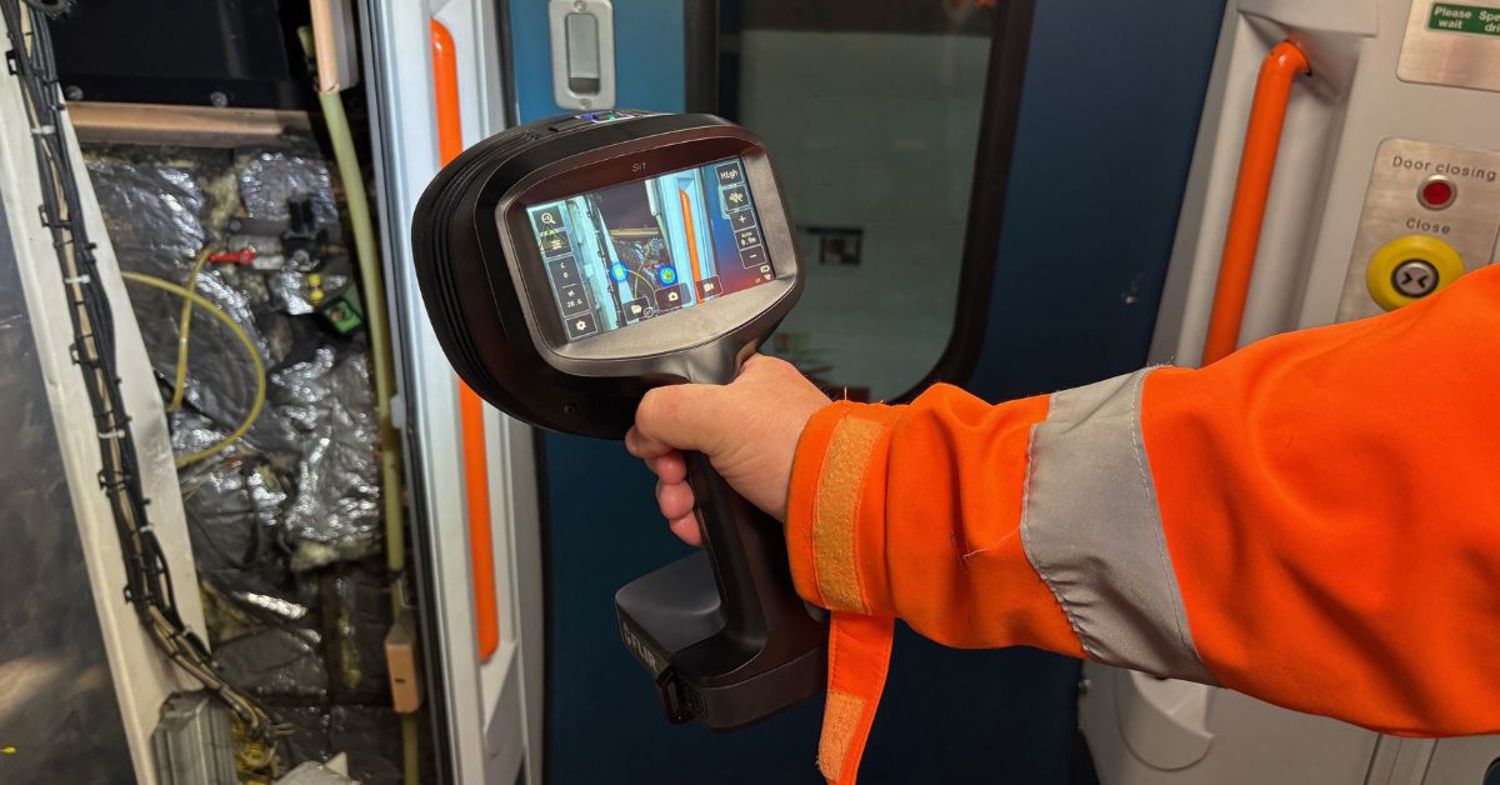Improve Rail Maintenance Shed Efficiency with the FLIR Si2-Pro Acoustic Camera


Around the world, the railway industry is an environment of extremes and contrasts. Whilst many countries have efficient, new, high speed rail services that, by and large stick to the scheduled timetable even when often overloaded with commuters, other countries have ageing rail networks, a mixture of old and new rolling stock, and incur regular breakdowns, and have a reputation that is unfortunately connected to the poor service.
Rail operators are under pressure to maintain efficient and on time services, bound by service level agreements which incur hefty fines when the service delivered falls below an agreed standard. In the UK, for example, operators have not only been fined but have lost their franchise completely due to a poor service history.
For these reasons train operators take maintenance very seriously. The scheduling of rolling stock for regular service, monitoring and maintenance procedures is standard practice. So how is it that with all this carefully planned and scheduled maintenance in place, breakdowns and problems still occur?
Ask any railway engineer about maintenance issues and he will tell you that however strict your scheduled servicing program, unplanned events happen. Extreme weather conditions, debris on the line, human error, all have the potential to lead to unforeseen mechanical faults. When these types of issues happen, trains often need to be returned immediately to the maintenance yard for repair, impacting planned scheduled maintenance schedules, timetable alterations and sometimes causing rail operators to fall below their service level agreements, incurring fines.
When these unforeseen issues happen, a vital ingredient is time. External coachwork may be easily seen but damage to some of the internal critical components might be more difficult to detect and can prove to be extremely time consuming.
On a recent visit to a busy railway maintenance yard, the FLIR Si2-Pro acoustic imaging camera was challenged to see if it could improve the engineer’ ability to diagnose and repair faults more quickly.
The traditional method of detecting air leaks in compressed and pneumatic systems is performed using a bubble spray. This requires a technician to walk the length of the train, listening carefully, often against the backdrop of a cacophony of background noise, trying to detect a leak. When a sound is detected, the technician sprays the various joints and components with the bubble spray in an attempt to accurately detect the source of the leak. This procedure is then repeated as the technician traverses the other side of the train. If the problem is not found, the procedure is carried out again inside the train where often panels must be removed to allow the bubble spray to be applied.

FLIR Si2-Pro detecting leaks in railway maintenance shed
It came as a bit of a surprise to the engineering group, but the FLIR Si2 camera picked up several leaks in the maintenance shed itself, which had compressed air lines fitted to power air-tools and other pneumatic components. These leaks were reported to the facilities management team to address.
When the Si2-Pro camera was focussed on the train, immediately a leak was identified in an unused pneumatic coupling, then several leaks were identified between carriages. Although the camera easily identified these leaks, only one was audible to the human ear. The rest would have gone unnoticed, reducing overall train efficiency as well as having the potential to give rise to further issues in the future.
The range of the FLIR Si2 Pro is impressive. Leaks were found from 30-40 meters away in a noisy maintenance shed, with another train being jet-washed, and a radio playing in the background.
An Inspection of the inside of the train revealed several leaks behind closed inspection cabinets, enabling maintenance crews to take remedial action and thus avoiding potential issues of a more complex nature in the future. Described by one of the maintenance team as ‘providing a great example of predictive and preventative maintenance’.
All in all, bubble spray proved no match for the FLIR Si2-Pro, which saved several hours on a single train inspection alone and reinforced the statement that, time is indeed a precious commodity. Scale that across all scheduled maintenance in a busy engineering rail depot and it is easy to realise the savings the FLIR Si2 Pro will make in a very short period of time.
The leak detection capabilities of the lightweight, handheld FLIR Si2 Pro is only part of the story. Through inbuilt software, the camera is able to report them and assist in prioritising remedial action. It is hard to imagine a modern rail maintenance shed performing air leak detection activities without the use of an acoustic imaging camera.
If you are responsible for maintenance facilities, or train maintenance, visit FLIR.com to learn more about how acoustic imaging can save time, reduce energy losses and improve overall operating efficiencies.